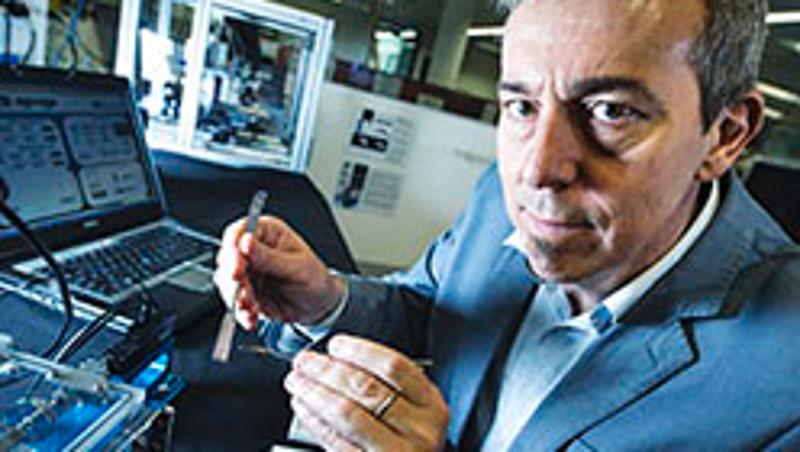
A key physiological process holding back the successful integration of 3D printed replacement body parts for many patients has been discovered by a team of biomedical scientists.
In an article published on Nature Biomedical Engineering's website today details how the researchers of QUT's Hutmacher laboratory in collaboration with the Friedl Laboratory at MD Anderson Cancer Centre, Houston, found that an anti-osteoporotic drug and a vascular growth factor inhibitor could prevent the process that leads to implant failure.
Professor Dietmar W Hutmacher, from QUT’s Australian Research Centre in Additive Biomanufacturing based in the Institute of Health and Biomedical Innovation, said medical devices and implants often failed because the patient’s body rejected them as foreign bodies.
“These implants elicit a foreign body response (FBR) and cause fibrotic encapsulation or scar tissue to develop around the implant which impairs its intended function in the body,” Professor Hutmacher said.
“We had to understand better the mechanisms behind the body’s response before we could find ways to change and/or guide the process so the 3D printed biodegradable scaffold can slowly dissolve away as it is replaced by new living tissue at later stages in the regeneration process.
“We know that when tissue is exposed to biomaterial it triggers a step-wise process of inflammation, followed by wound healing and, if not resolved from a pro-inflammatory to a pro-reparative or regenerative mode of action, tissue fibrosis and scarring.”
Professor Hutmacher said the team studied the mechanistic roles of two white blood cell types - monocyctes and macrophages – key to the body’s regeneration process.
“There are two types of macrophages – M1 macrophages cause inflammation and M2 macrophages are pro-regenerative.
“Both are implicated in the formation of fibrous scarring around the implant yet we did not fully understand the mechanism by which they either enhanced or counteracted the formation of fibrotic scarring in the context of a additive biomanufactured scaffold.
“Our research into their role found that M1 macrophages joined and became immobilized along the scaffold surface before forming multi-nucleated giant cells which initiated a network of neovessels within the scaffold pores that acted in a way similar to the neovessels that support the growth of fibrous tissue around a tumour.
“These macrophages and their giant cells produced a growth factor which led to the formation of the dense collagen capsule around the implant two to four weeks later.”
Professor Hutmacher said these insights into the scaffold integration process within soft tissue suggested therapeutic intervention.
“We found that administration of clodronate, an anti-osteoporosis drug, and VEGF Trap, an anti-vascular endothelial growth factor drug, significantly reduced giant-cell accumulation, and the formation of neovessels and fibrosis.
“This represents a promising strategy to modulate both early inflammation and later stage tissue remodelling (weeks to month) to minimize chronic FBR and implant failure.”
The research team consisted of Eleonora Dondossola, Stephanie Alexander, Stefano Filippini, and Peter Friedl from the The University of Texas MD Anderson Cancer Center, and Dietmar W. Hutmacher and Boris Holzapfel from QUT.
Examination of the foreign body response to biomaterials by nonlinear intravital microscopy.
Media contact: Niki Widdowson, QUT Media, 07 3138 2999 or n.widdowson@qut.edu.au.
After hours: Rose Trapnell, 0407 585 901 or media@qut.edu.au


